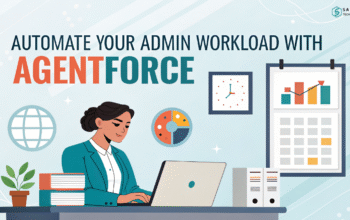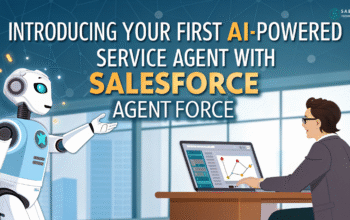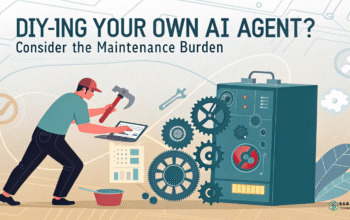Salesforce Healthcare Cloud simplifies patient management with better care coordination and personalized health experiences.
In today’s complex healthcare landscape, delivering personalized and timely care is no longer a luxury—it’s expected. Healthcare providers face growing pressure to streamline communication, reduce patient wait times, and enhance treatment outcomes. Amid these challenges, Salesforce Healthcare Cloud emerges as a powerful ally, transforming how providers approach patient management.
This guide explores the most effective ways to use Salesforce Healthcare Cloud to improve patient experiences, support staff productivity, and simplify workflows in a humanized, real-world way.
Why Salesforce Is a Game-Changer for Healthcare
When people think of Salesforce, they usually associate it with sales teams and CRM. But in recent years, the platform has expanded far beyond its roots. Salesforce Healthcare Cloud is tailored specifically for the medical field, offering functionality that helps physicians, nurses, administrators, and care coordinators deliver more connected and compassionate care.
By offering a 360-degree view of patient data, this solution centralizes interactions, medical histories, preferences, and care plans into a single, easily accessible location. It’s not just about automation—it’s about humanizing digital processes.
Embracing a Patient-Centric Mindset
At its core, Salesforce for healthcare promotes a patient-first approach. Instead of navigating siloed systems and fragmented data, teams can see the entire care journey on one screen. This allows providers to offer personalized recommendations, follow up on treatment, and build trust over time.
Even seemingly small actions—like remembering a patient’s preferred appointment time or language—can dramatically improve satisfaction. And with the platform’s intuitive interface, staff can learn and adapt quickly without extensive training.
Best Practices for Using Salesforce Healthcare Cloud in Patient Management
To unlock the full potential of Salesforce Healthcare Cloud, healthcare organizations must adopt a strategic approach. Below are actionable best practices that can be woven into daily operations.
1. Centralize Patient Records Securely
Begin by integrating EHRs (Electronic Health Records) and other data sources into Salesforce. This ensures that all departments—from admissions to discharge—are on the same page. Use secure APIs and ensure HIPAA compliance at every stage.
2. Automate Routine Tasks with Salesforce Healthcare Cloud
Let’s face it: paperwork eats into time that should be spent with patients. Automating appointment reminders, billing alerts, and follow-up emails through Salesforce Healthcare Cloud can free up hours every week. This efficiency doesn’t just benefit the staff—it improves patient follow-through and reduces no-shows.
3.Create Personalized Care Journeys with Salesforce Healthcare Cloud
With AI-driven insights, you can design workflows tailored to each patient’s needs. This means sending timely medication reminders, recommending preventive screenings, or tracking progress on wellness goals.
By leveraging Salesforce Healthcare Cloud, care teams can proactively engage patients, rather than reactively responding to issues.
4. Collaborate Across Departments Seamlessly
A patient’s experience involves more than just doctors. Nurses, lab technicians, billing staff, and even marketing teams contribute to the journey. Salesforce’s collaborative tools like Health Cloud Console and Slack integrations make cross-departmental communication easier and faster.
Use Salesforce Healthcare Cloud to assign roles, escalate cases, or flag concerns—all in real time.
5. Monitor Progress with Real-Time Dashboards
Stay informed with visual dashboards that track appointment adherence, medication compliance, and more. Leaders can identify bottlenecks, while clinicians can make informed decisions at a glance.
Data, when used ethically and wisely, becomes a compass for better care. And patient management becomes less of a burden, and more of a mission.
6. Provide Support Beyond the Clinic
The care journey doesn’t end when the patient walks out the door. Use Salesforce to follow up post-discharge, share educational materials, or conduct satisfaction surveys.
These touchpoints show patients they matter—and that their providers aren’t just reacting to problems, but walking with them toward wellness.
Human Touch in Salesforce Healthcare and Patient Management
What truly makes Salesforce stand out isn’t just its technology—more importantly, it’s the way it enables genuine human connection at scale. Moreover, with tools like Care Plans, Patient Communities, and Health Bots, organizations can not only stay responsive but also remain empathetic, even as patient loads steadily increase.
It’s easy to forget that behind every form and field lies a person with fears, hopes, and questions. Salesforce Healthcare Cloud helps providers bridge that emotional distance, especially in fast-paced clinical environments.
Transforming Patient Management with Salesforce
Salesforce Healthcare Cloud empowers healthcare professionals to:
- Streamline patient data and communications
- Create personalized care journeys
- Collaborate across teams
- Monitor health metrics in real time
- Deliver consistent, patient-focused experiences
The goal isn’t just efficiency—it’s empathy. And in a world that’s increasingly digital, this balance is more important than ever.
FAQs
1. What is Salesforce Healthcare Cloud used for in hospitals?
It helps hospitals manage patient records, streamline communication, and improve overall patient care through automation and collaboration.
2. Is Salesforce Healthcare Cloud HIPAA-compliant?
Yes, Salesforce complies with HIPAA requirements and offers features to secure patient data, including encrypted records and access controls.
3. Can Salesforce integrate with my hospital’s existing systems?
Absolutely. Salesforce supports integration with EHRs, billing software, and third-party apps using secure APIs and connectors.
4. How does Salesforce improve patient engagement?
It enables providers to send personalized messages, reminders, and follow-ups, fostering continuous and meaningful patient engagement.
5. Is Salesforce suitable for small clinics as well as large hospitals?
Yes. Salesforce offers scalable solutions that can be tailored to both small practices and large healthcare networks.
Feeling more like puzzles than solutions? That’s when Sababa steps in.
At Sababa Technologies, we’re not just consultants, we’re your tech-savvy sidekicks. Whether you’re wrestling with CRM chaos, dreaming of seamless automations, or just need a friendly expert to point you in the right direction… we’ve got your back.
Let’s turn your moments into “Aha, that’s genius!”
Chat with our team or shoot us a note at support@sababatechnologies.com. No robots, no jargon, No sales pitches —just real humans, smart solutions and high-fives.
P.S. First coffee’s on us if you mention this blog post!



